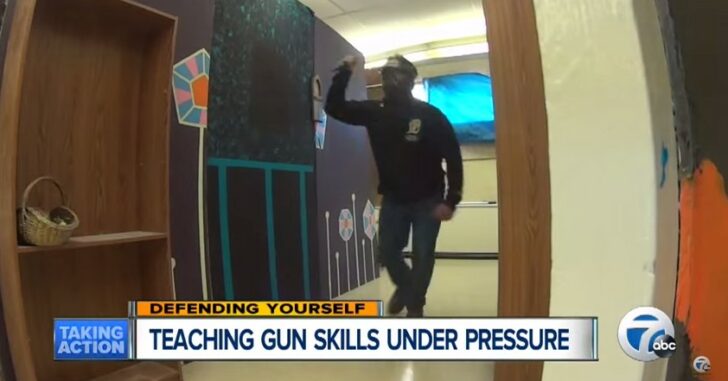By Robert Farago. Republished with permission from TheTruthAboutGuns.com
When I first started carrying a gun I found it an incredibly stressful experience. I constantly wondered when, where and how I might use my firearm for self-defense. Like . . .
I’m waiting in line in a convenience store (a.k.a., a Stop ‘N Rob). A bad guy bursts in, points a gun at the man behind the counter and demands the cash. Shoot or don’t shoot? The bad guy pistol-whips the cashier. Shoot or don’t shoot? My daughter gloms on to me. If I take return fire, she’ll be in the line of fire. Shoot or don’t shoot?
After endlessly gaming out various scenarios in various places, I came to a basic conclusion: focus on the legal standard and relax.
In general, you may legally brandish (i.e., remove your gun from your holster and point it at another human being) or fire your weapon at a human being when that person puts you or other innocent life in imminent, credible danger of death or grievous bodily harm. [NB: State statutes vary. Google your state’s name plus the words “legal use of lethal force law” and read the actual law.]
There is one important caveat: in all cases, be very careful about drawing your gun if you don’t know the whole story. For example, if you come in on a robbery – rather than see if from the beginning. Who’s pistol-whipping whom? Did the robber and bad guy trade places? It has happened.
OK, that’s about it. Seriously. You’re good to stow. Well, one more thing. A gentle reminder . . .
MOVE! In the video above, notice that the reporter doesn’t move and gets stabbed. This despite PLENTY of warning that she was facing a lethal threat. She also holds the gun too low and crosses her thumbs on the pistol; learn how to properly grip your gun. But above all, get off the X (as trainers are won’t to say).
Don’t get me wrong: I’m not arguing against armed self-defense training. I can’t recommend force-on-force training highly enough. It’s more important than thousands of hours at the gun range. The more you practice armed self-defense in a high-stress simulation, the better an armed self-defender you’ll be. But it’s also true that you can round down to zero the percentage of successful defensive gun uses where the armed innocent had force-on-force training.
In other words, firearms training is great but the lack of training doesn’t leave you defenseless. The most important factor in a successful defensive gun use: having a gun. Well, right after avoiding a gunfight in the first place (by being aware of your surroundings and avoiding stupid people in stupid places doing stupid things). If you’re carrying a weapon – home carry people! – your natural survival instincts will kick-in and you’ll be able to do something useful with your firearm. Maybe.
Yes, there is that. There are no guarantees in life. There are no guarantees in life or death situations. None. You can train like a pro, carry the best possible gun, do everything “right” and still die or suffer horrific injuries. If you can accept that fact – and it is a fact – and vow to defend yourself and (perhaps) other innocent life no matter what, you will have the mindset you need to have a fighting chance. Truth be told, that’s as good as it gets. Accept it and enjoy life, because life is precious. And short.

